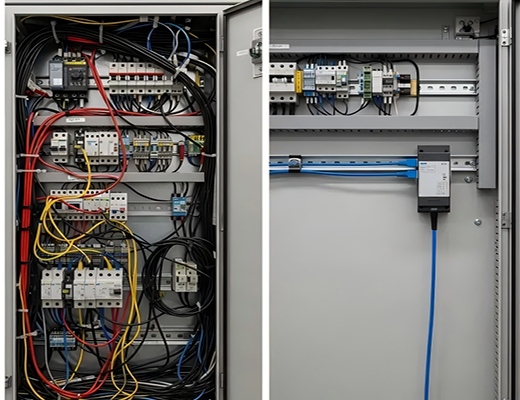
PoE-PD: Power Your IoT with a Single Ethernet Cable
|
|
Time to read 5 min
|
|
Time to read 5 min
You've likely heard of Power over Ethernet (PoE), but do you know about its two key players: the PSE and the PD? In industrial IoT, understanding the difference is crucial.
This article breaks down what a PoE-PD is—a Powered Device that receives power over the Ethernet cable—and how it works with a Power Sourcing Equipment (PSE) to simplify your network.
Forget running separate power and data cables; this technology can slash your installation costs, streamline your wiring, and give you the flexibility you need for remote deployments.
In my experience, when engineers and system integrators first start looking at industrial IoT deployments, they get excited about the data—the real-time insights, the dashboards, the predictive maintenance. But what they often forget about until the last minute is the most fundamental problem of all: how do you get power to the devices in the field?
You see, a lot of industrial environments, like wind farms or remote pump stations, aren't exactly wired for convenience. Finding an outlet for a remote router or a camera can be a logistical nightmare, and running new electrical wiring is almost always a slow, costly, and complex affair.
This is where a little hero called PoE-PD comes in. Let's be clear: this isn't just about a cool technology; it's about solving a real-world problem that can single-handedly tank a project budget. So, let’s peel back the layers on Power over Ethernet and talk about the two terms you really need to know.
I’ve seen this mistake made countless times: someone buys a PoE-enabled router, plugs it in, and wonders why it doesn’t power up. The "aha!" moment for many is realizing that PoE isn’t a single component; it’s a symbiotic relationship between two devices.
This is a critical distinction. A device with a PoE-PD interface, like the Robustel R1520 Global, is engineered to be powered by a PoE source. Its primary job is to consume power, simplifying your cabling and installation. Conversely, a PoE injector, which is a PSE, is designed to provide power. You can’t simply plug one PD into another and expect it to work!
Now, let's get down to the business of why this is such a big deal. For industrial IoT, choosing a gateway with a PoE-PD interface is a strategic decision that can save you a significant amount of money and time.
Here are just a few of the reasons I advise clients to prioritize this feature:
A device that supports PoE-PD is not just a router; it's a strategically designed tool for modernizing your network.
The magic behind the PoE-PD is a process called "detection." It’s an essential safety feature that prevents a PSE from accidentally sending power to a non-PoE device, which could damage it.
The process works in three simple steps based on IEEE 802.3af/at standards:
This handshake ensures safety and compatibility, which is paramount in industrial environments where equipment is expensive and downtime is a major concern.
A1: You can, but it won't receive power. A PoE-PD device needs a PoE-enabled switch or a PoE injector to get its power. It will still function as a data-only device if you have a separate power source connected to it. This highlights the flexibility of devices like the Robustel R1520 Global.
A2: Not necessarily. You must check the standard. The most common standards are IEEE 802.3af (which provides up to 15.4W) and 802.3at (which provides up to 30W). The device and the power source need to support the same standard to operate correctly. You should always consult the device's datasheet to confirm its power requirements. For example, the R5020,R2120 clearly states its PoE-PD compliance.
A3: It's all about total cost of ownership (TCO). PoE-PD saves money by reducing installation labor, material costs for separate power cables, and long-term maintenance by enabling remote power cycling. This approach simplifies logistics and accelerates deployment timelines, a huge win for any large-scale project.


